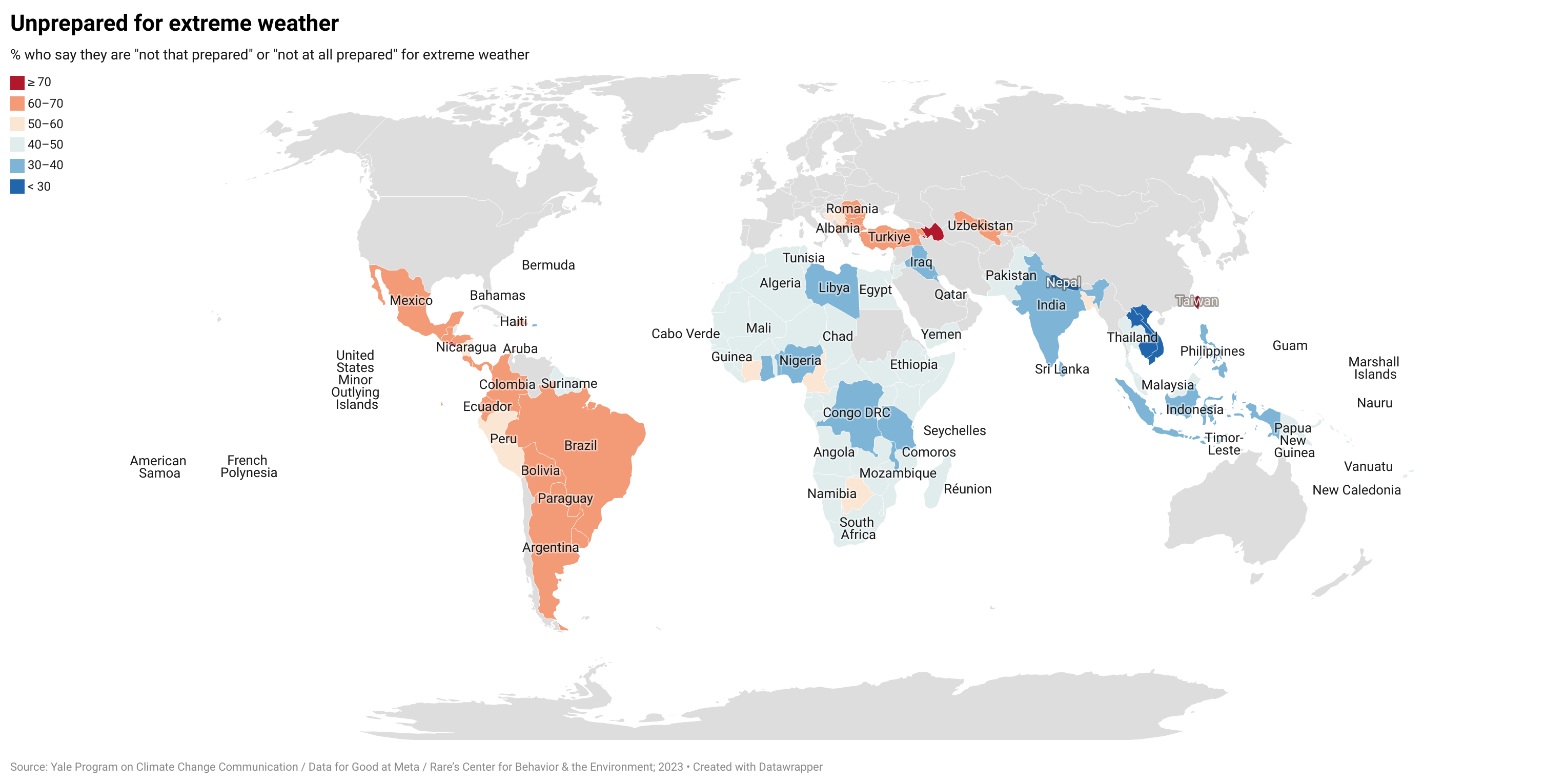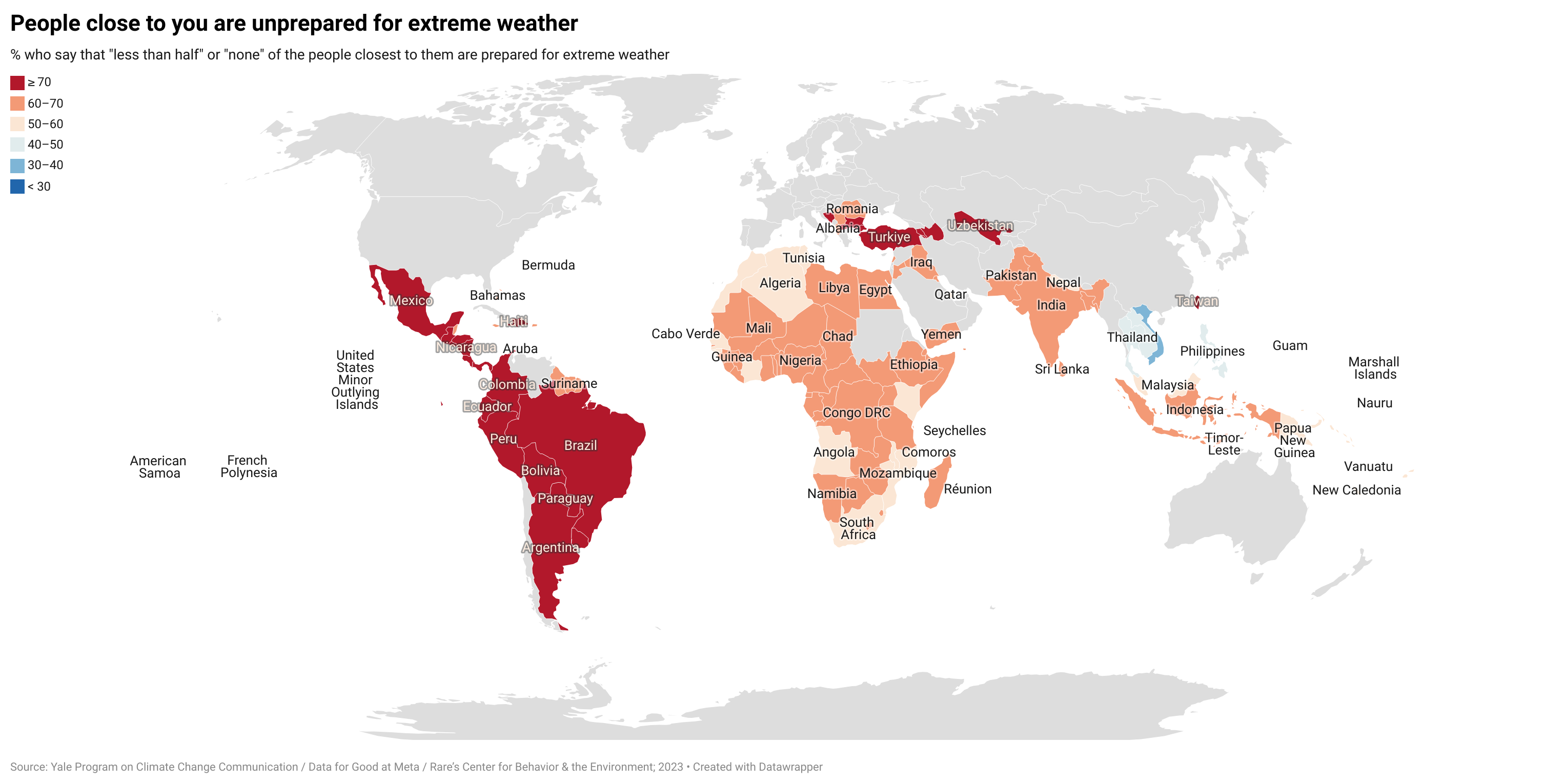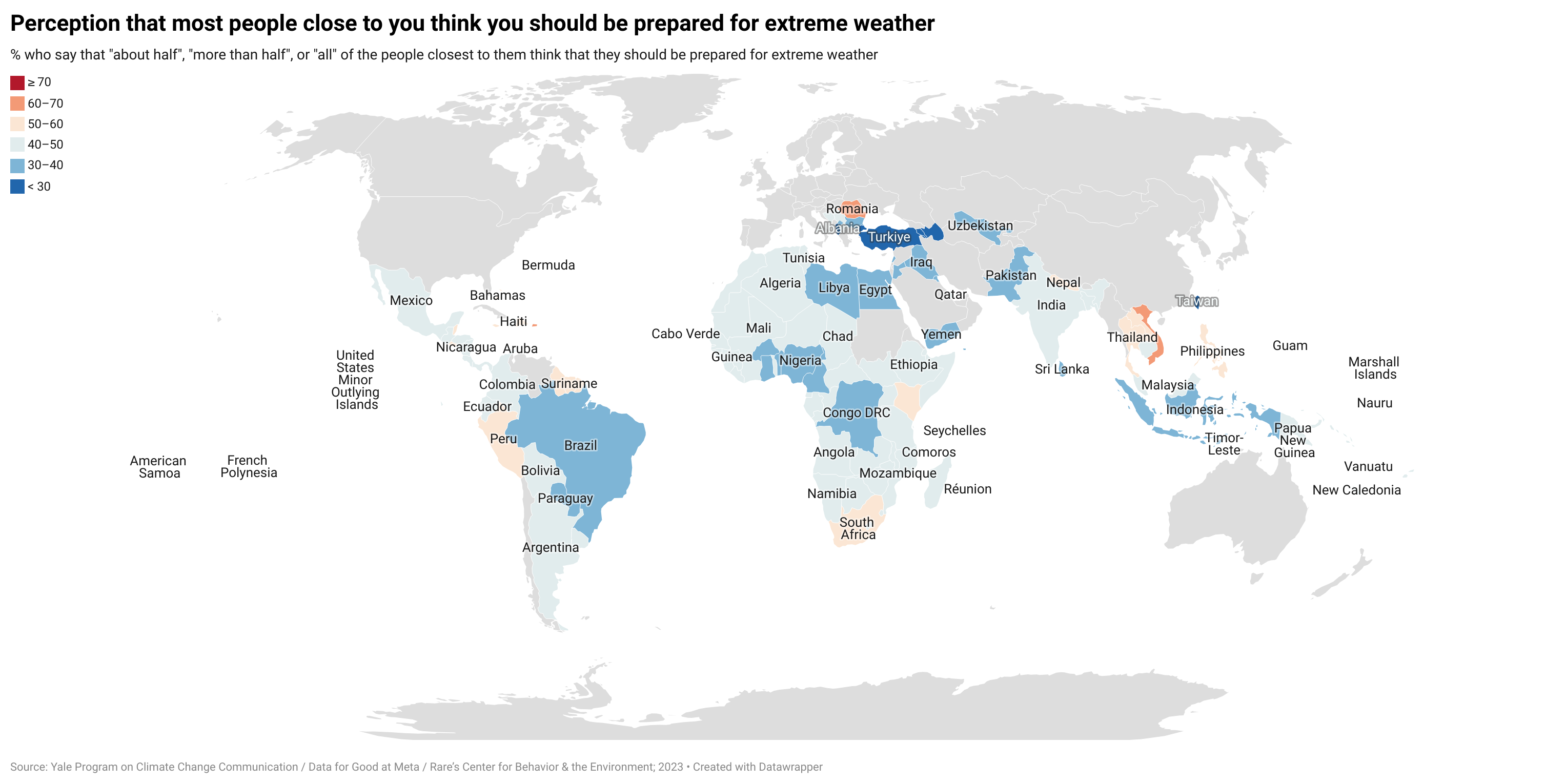Report · Mar 26, 2024
International Public Opinion on Climate Change: Extreme Weather and Vulnerability, 2023
By Anthony Leiserowitz, Marija Verner, Emily Goddard, Emily Wood, Jennifer Carman, Leah Ndumi Kioko, Natalia Ordaz Reynoso, Erik Thulin, Seth Rosenthal, Jennifer Marlon and Nicole Buttermore
Filed under: Climate Impacts and Beliefs & Attitudes
2. Preparedness for Extreme Weather
2.1. Respondents in many areas say they are not prepared for extreme weather.
Majorities of respondents in 31 out of 73 areas say they and their household are either “not that prepared” or “not at all prepared” for extreme weather. Respondents in Taiwan (76%), El Salvador (72%), and Azerbaijan (71%) are the most likely to say so. In contrast, respondents in Laos (24%), Cambodia (18%), and Vietnam (15%), are the least likely to say so.
Responses indicate clear regional patterns. Respondents in South America report being less prepared than respondents in Sub-Saharan Africa, South Asia, and Southeast Asia. Specifically, majorities in all areas of South America report being either “not that prepared” or “not at all prepared” for extreme weather.Majorities in all areas that were surveyed in Europe (Balkan countries and Armenia) also report being either “not that prepared” or “not at all prepared” for extreme weather. In contrast, only three of 41 areas in Sub-Saharan Africa, and only two of 13 areas in South and Southeast Asia, have a majority of respondents who say so.
2.2. Many respondents say that the people closest to them are not prepared for extreme weather.
Majorities of respondents in most areas (67 out of 73) say that “less than half” or “none” of the people closest to them are prepared for extreme weather. Respondents in Panama (84%), El Salvador (81%), and Turkey (81%) are the most likely to say so. In contrast, respondents in Laos (44%), Thailand (43%), and Vietnam (33%) are the least likely to say so.
2.3. Relatively few respondents think the people closest to them expect them to be prepared for extreme weather.
Majorities of respondents in 31 out of 73 areas think that “all,” “more than half,” or “about half” of the people closest to them think that the respondents themselves should be prepared for extreme weather. Respondents in Romania (62%), Puerto Rico and Vietnam (both 60%), and the Philippines (57%) are the most likely to say so. In contrast, respondents in Turkey (27%), Azerbaijan (24%), Armenia (22%), Albania (21%), and Taiwan (18%) are the least likely to say so.


